TEXT AND PHOTOGRAPHS BY DEVYANI GUPTA
New Delhi, India
In 1960, Shashi Kapur, a young woman in her early 20s placed an order with a leather worker in Mandalay for a handcrafted leather purse. It was to have traditional Burmese-style hand-painted figures: a vibrantly coloured dancing girl with cymbals accompanied by smaller figures playing Burmese goblet drums called ozi on the front, and on the back, a colourful rendition of musicians playing smaller finger-cymbals and a saung, the Burmese harp. In a confidently optimistic move, this young woman who is my grandmother and who had then just enrolled as a student in the Mandalay Medical College, made a request with the artisan to have her name engraved in beautiful lettering on the inner flap, complete with the title yet to be earned: Dr. Shashi Kapur.
My maternal grandmother was born in 1939 in Lamine, a small township in Mandalay to Bodhraj Kapur, an Irrigation Engineer sent to Burma on deputation by the British Government, and Kesari Devi Kapur, a housewife tasked with bringing up five sons and two daughters in a foreign culture far away from home. Though the family called Lahore home, my great-grandfather’s job came with frequent transfers to new, unknown cities. My nani’s life, thus, is punctuated by flight, escape and departure, and her paths meander across the Indian subcontinent between the three nations of Pakistan, India and Myanmar.

Shashi (L) with her niece, Renu, in traditional Burmese clothes 
Shashi, with her nieces, Renu (C) and Sheela (R). Renu now lives in Bombay, and Sheela still in Burma
The first time the family was forced to flee was when they left Mandalay in 1943 during the Japanese occupation of Burma. They set out on foot towards India, carrying as many belongings as they could with a hope to salvage it all. But the journey was difficult, and the family with young children started leaving things behind to lighten the burden. She cannot remember now how long it took, “seemed like months and months”, she told me. As they closed in on India, crossing mountain roads and forests, one of my nani’s brothers fell ill with typhoid. He was admitted to a hospital in the nearest village to wherever they haplessly found themselves to be at the time, and the family stayed there for a few months before moving on after he recovered. Setting out again, they were finally able to cross over into India through Imphal.
For a few years after that difficult passage into the then undivided India, my nani’s father was posted in Wagah. She recalls growing up in a big house with mango trees where merchants would ride by on horses every day. The posting after that was in Lahore, and the family was happy to be back home, living on Babiyan wali galli, in the old walled city.
However, this joy of homecoming was short-lived, for her father was soon sent back to Mandalay on deputation by the government, while the family stayed behind in Lahore. Then came the Partition in 1947. When the country was burning, and lath-armed men of the family went on night patrol duty in their mohalla, and when the terraces and rooftops of all houses were turned into ammunition stores, well stocked with stones and bricks and kerosene, she embarked on her second perilous voyage across the Indian subcontinent. Due to the uncertain political landscape, the family decided to move all their belongings in one room, locking it behind them, and set out towards the railway station in a tanga, on a night when the city was on fire. They took a train across the country to Calcutta. From there, a ship to Rangoon. Then another train to Mandalay to finally join her father. Two of her brothers stayed behind with an aunt to continue to guard their house and mohalla, and after a few months, when they could make the journey to Mandalay, they were all together again.
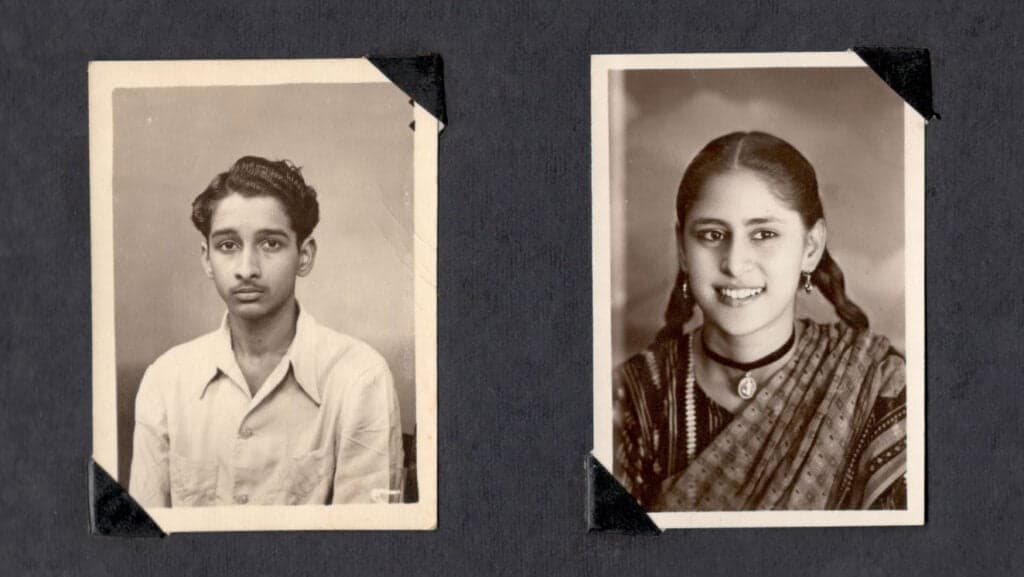
Passport sized photos of Chandrakant and Sashi from their high school days. They went to different schools, but met in Mandalay Medical College in 1959
In Mandalay, my nani attended the Anglo-Vernacular St. Xavier’s school where she was given a Burmese name – Yi Yi Win. She spoke Burmese fluently, wore a longyi, had Burmese friends, and cycled from her home to her school, riding past pagodas and the Mandalay Fort every day. Though at home they still spoke Punjabi, it was Burmese that came instinctively to her and I grew up hearing my nani and nana converse exclusively in Burmese when talking to each other.
In 1959, after passing her Higher Secondary examination and encouraged by her brothers, my nani decided to study to be a doctor. In a class of forty students, she would be one of eight women, and the only Indian; of the remaining female students, six were Burmese and one was Burmese-Indian. She recalls being driven to Mandalay Medical College to enrol. Just out of an all-girls’ high school, she was terrified of the crowd of boys milling about the corridors and nearly got cold feet. It was here during the first day admission formalities that she met a strapping young man, a friend of her brother’s and her senior in Mandalay Medical College, who came forward to help with the paperwork. His name was Chandrakant Singhal, and he was to later be my nana. A year older than her, he was the son of a medical doctor in the army, Capt. Dr. Hans Raj Singhal who was transferred from Bombay and posted on deputation to a town near Madalay in 1956.
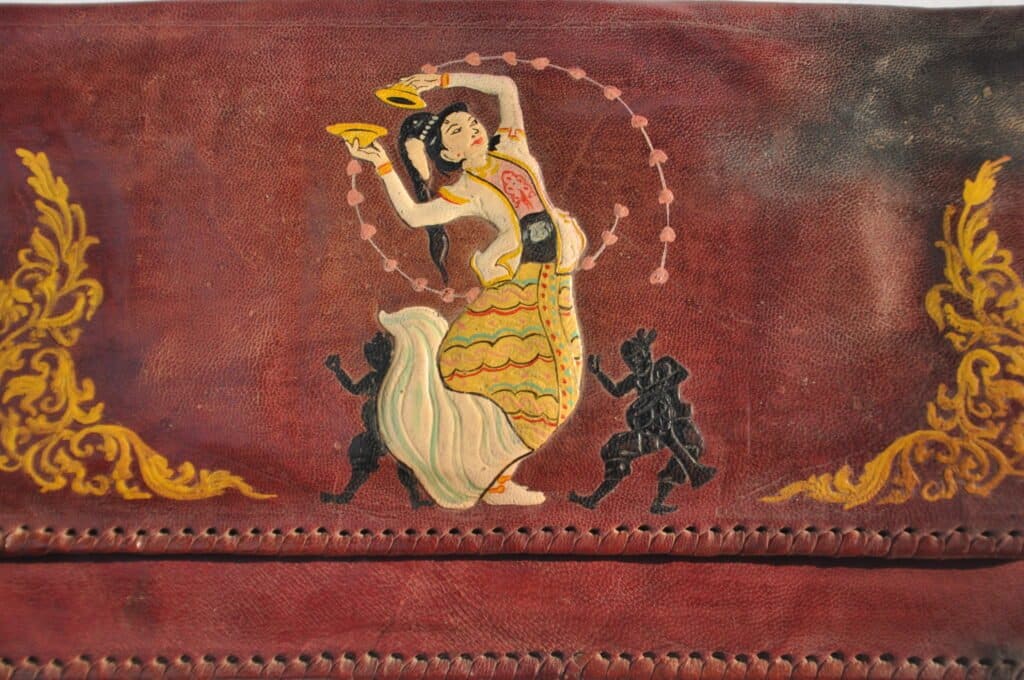
the front, with a dancer and figures playing Burmese goblet drums called ozi 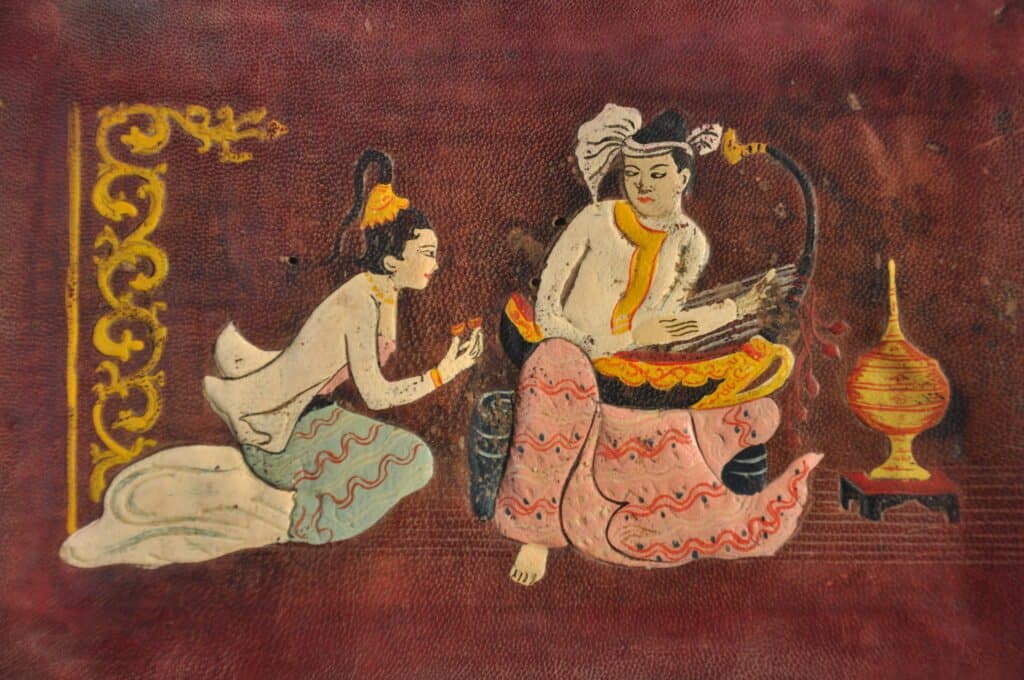
the back, with musicians playing cymbals and the saung, a Burmese harp
It was sometime around this time that my nani placed the order for this leather purse. The leather has gone brittle with time, discolouration grows on one corner, threatening to blacken the dancing paintings that are still bright and lively, as if painted just days ago. The paint occupies a thick layer, I can feel its ridges and the dust-like leather as I run my hands over it. On opening the flap, a little cosmetic mirror, now with age spots, meets my eyes with a hazy reflection. Right underneath, embossed in beautiful black lettering: Dr. Shashi Kapur, which immediately makes the purse more relevant and more real for me. It is a perfect depiction of her life then – a cosmopolitan woman thoroughly immersed in the culture and traditions of Burma, poised to become a doctor at a time when it was a rare profession for women. At the time, she was still using her maiden name, little knowing that almost immediately after she acquired the title ‘Dr.’, she would also adopt her husband’s last name ‘Singhal’. With that knowledge, this purse seems to be made only for those few tenuous days of change when my nani had just graduated as a doctor, and was still unmarried, about to marry the love of her life.
Getting back to my story, in a Bollywood-like development, my nana and nani fell in love over chemistry lessons in the library that he would take for her as she struggled with the subject. In another Bollywood cliché, my nana’s father made him transfer to Rangoon Medical University as it was the general consensus that he was not paying attention to his studies, except maybe to chemistry lessons. What followed was a storybook romance that blossomed over a steady stream of letters. My nani married my nana as soon as she finished her MBBS and started her mandatory internship. Both her parents had passed away when she was in college, and it was her brothers who undertook the ceremony.
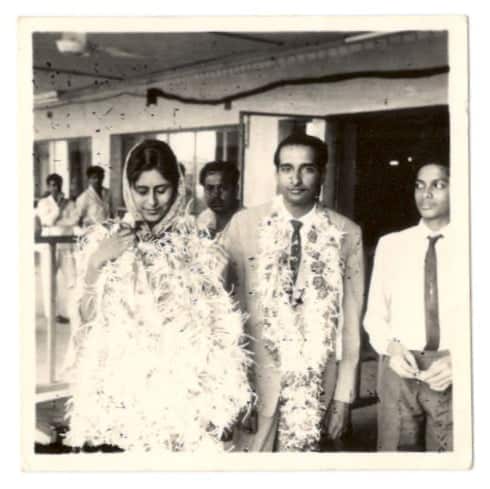
April 25, 1964. Shashi and Chandrakant got married in the Arya Samaj, Mandalay 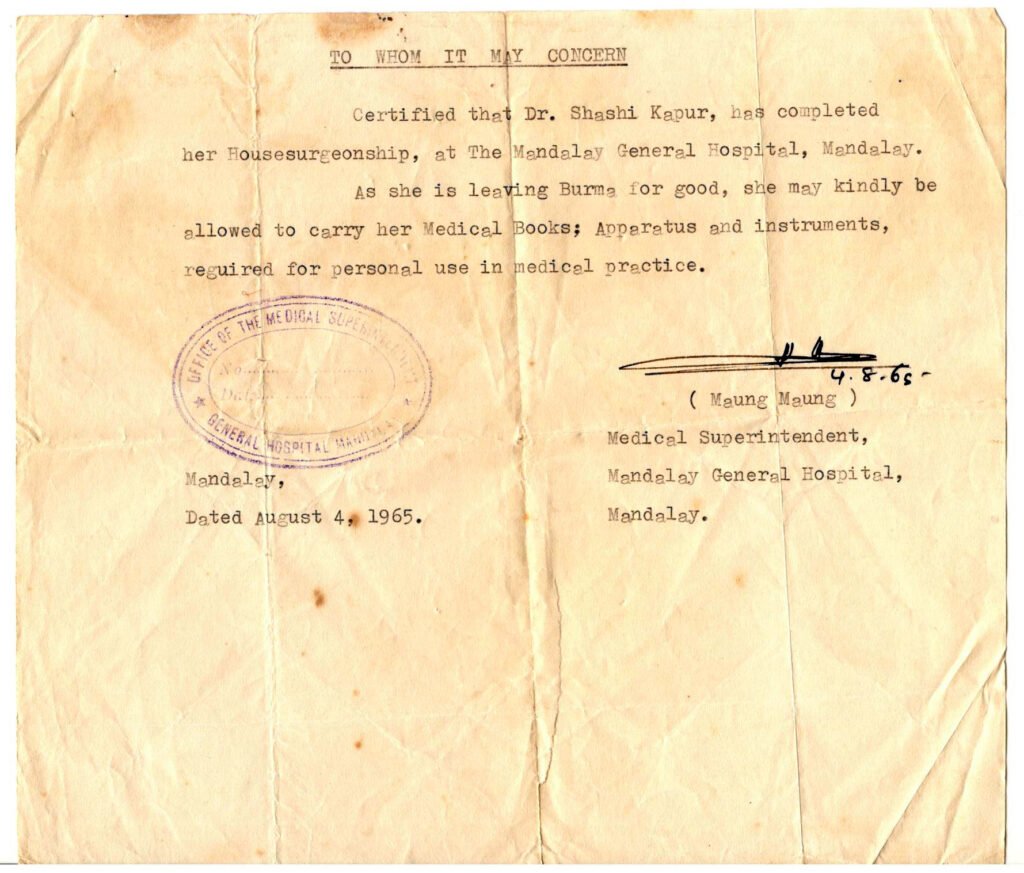
Mandalay leaving letter, dated August 4, 1965
In 1964, with months of her internship still left, my nani was faced yet again with circumstances that forced her to leave. With Burma under martial law, an increasingly suspicious and inward-looking government had started commanding foreigners to leave the country. My nana and his family were given a notice to leave within 24 hours. Forced to stay behind for her internship duration, my nani bid farewell to her husband, who left the country for Bombay within hours.
It would be a whole year before my nani could finally join her husband in India in 1965. They lived in Bombay, where they both worked in the Bombay Hospital. The young couple had rented a one-room accommodation at a doctors’ hostel near the hospital. Their days were long and busy. It was here in Bombay that my mother, Uma, was born in 1966. The same year, on seeing a newspaper ad for the post of Government Duty Medical Officers, my nana and nani applied and shortly found themselves on a train to Raipur, Chhattisgarh, to start their new life in a state that felt alien to them, albeit in a country that also felt foreign.

Dr. Shashi Singhal (L) in the OT in Dhamtari with Nurse Biswas 
Chandrakant and Shashi in Dhamtari, early 80s
They settled in a small town called Dhamtari, two-hours’ drive from Raipur, where they were greeted with a small house that was being put to use as a chicken coop right up until their arrival. My nani was the only woman doctor in the area at the time and their job required that they tour the zila for twenty days of each month. Initially they took my mother with them and also tried to take turns in their tours in a way that would minimise overlapping. Around two months after arriving in Dhamtari, they found a nanny who took care of my mother. Her name was Prem Lata and she became like family. In fact, she lived with my nani, right up until her death in 2018.
Between this steady stream of journeys and expeditions, they finally decided to plant their roots in Dhamtari. Today my nani is a well-known gynaecologist in the area. Though old age has slowed her down, she still attends to patients sometimes. My nana passed away in 2005. He was a renowned, and for a long time – the only, laparoscopic surgeon in the area. My nani’s cupboards open up to photographs, trinkets and objects, like this purse, from a far-flung place and a bygone time, in a seemingly incongruous way as far as cupboards in Dhamtari go. But the stories that accompany them tie it all together in an unbroken thread to this place and this time.

Dr. Shashi Singhal (née Kapur), Delhi, 2019 
A family photo with Uma and Blaraj, Dhamtari, 1970s 
Mukta Gupta with the Mandalayan purse, Delhi, 2020

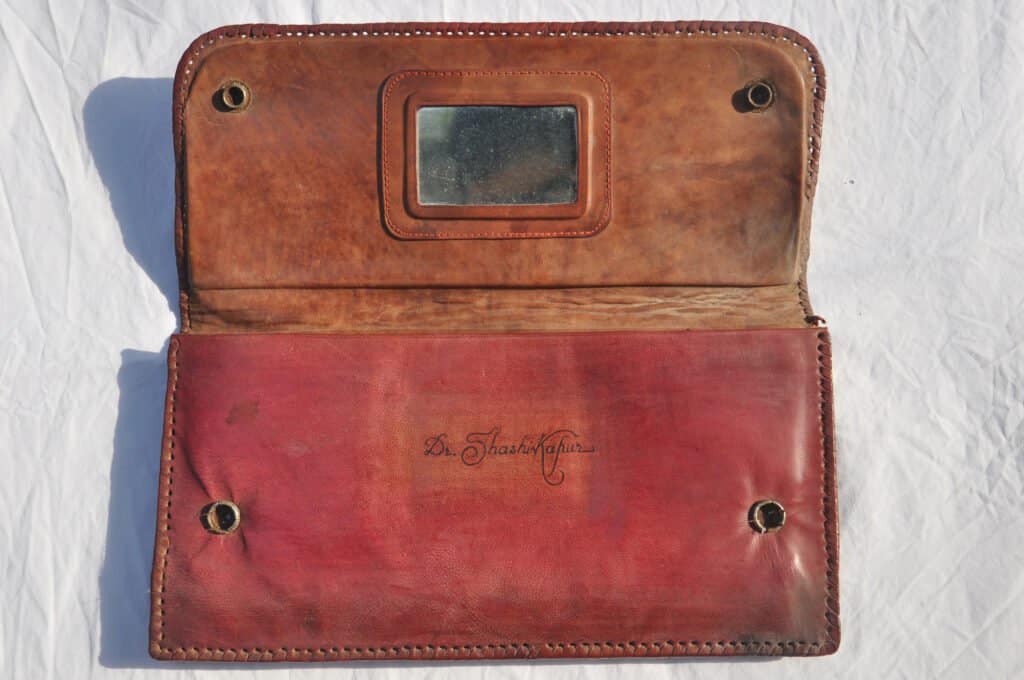
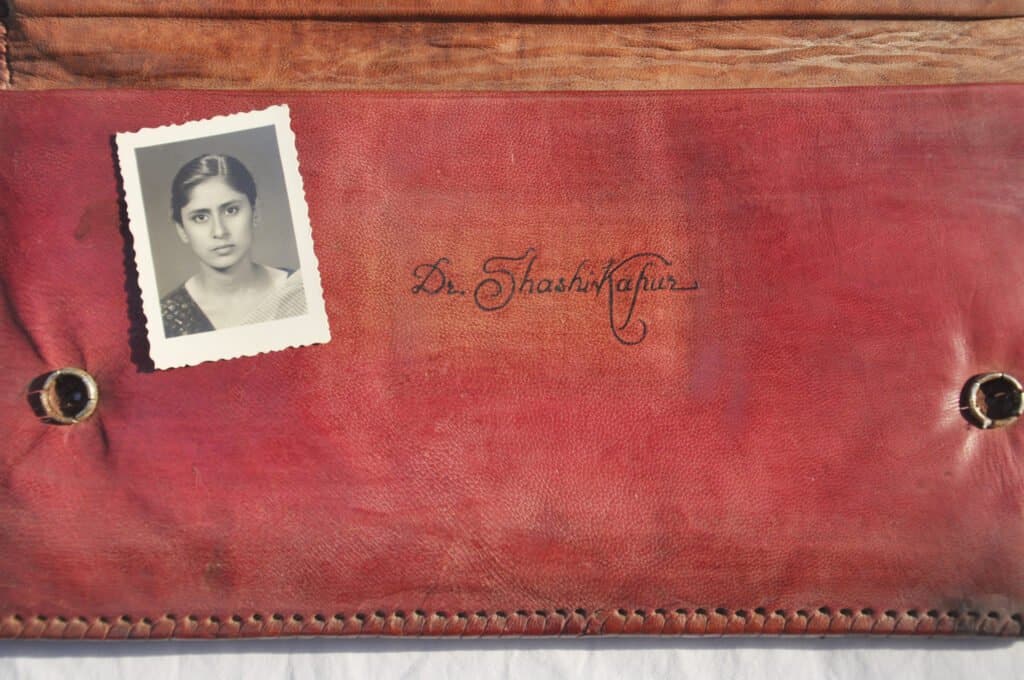
Very well written
Great write up!
Did your naana and naani visit Burma after it opened up in 90s?
And it would be a great ride through memories, if she did.
Best wishes and regards,
Raj